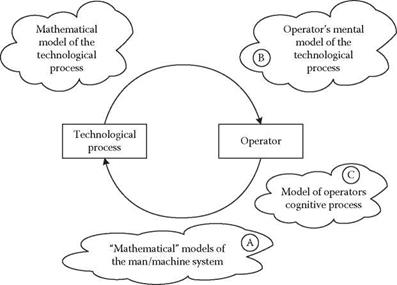Toni Ivergard and Brian Hunt
CONTENTS
1.1 General Models………………………………………………………………………………………….. 12
1.1.1 Motives for Automation and Computerisation…………………………….. 12
1.1.2 Examples of Computerisation in Process Industries……………………… 15
1.2 Basic Control Concepts and Human/Machine Models…………………………….. 19
1.2.1 Open and Closed Controls…………………………………………………………….. 20
1.2.2 Human/Machine Control Systems……………………………………………….. 22
1.3 Models of Complex Human/Machine Systems………………………………………… 27
1.3.1 Models of Operators as Components in Complex Systems………….. 27
1.3.2 Mental Models of the Physical Process…………………………………………. 34
1.4 Recommendations for Principles in the Design of Control Centres……………. 35
1.4.1 System Design……………………………………………………………………………….. 35
1.4.2 Participative Design and Action Research…………………………………….. 37
1.4.3 Usage of Handbook Data…………………………………………………………….. 38
References and Further Reading………………………………………………………………………….. 40
The literature describes relatively few models that have been developed specifically for control of process industries. The majority of the existing models are based on controlling aeroplanes, ships, and the like. Various types of human/machine models and operator models have also been discussed in relation to the control of nuclear power stations.
Some general models for human/machine control are described first. There then follows a presentation of some general thinking behind dynamic models for integrated human/machine control systems (Figure 2.1A). Here the aim is to develop the technical control theory through to a more detailed discussion of models of the operator’s cognitive processes in control systems and special control room applications (Figure 2.1C), together with the operator’s mental experience-based model of the technical process (Figure 2.1B). Finally, some comparative commentary on the value of the different types of models is presented. Technical models of the actual process are not covered here but can be found in Lowe and Hidden (1973). More recently, many authors have presented new models of relevance for process control. Typical examples are the work of Schon (1982) and Raelin (1997); this aspect is discussed in Chapter 11.
|
FIGURE 2.1 General model for human/machine control. |




